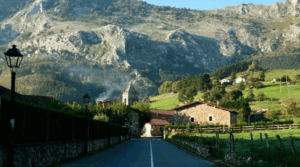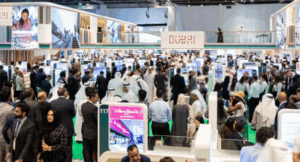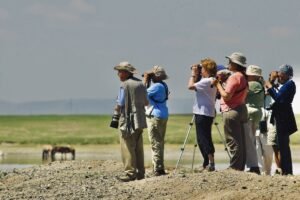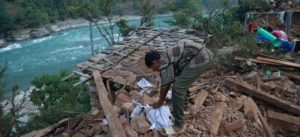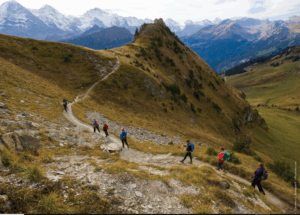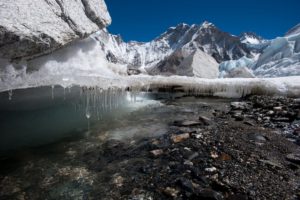Cultural tourism in medieval Nepal
– Dr. Shaphalya Amatya
The history of medieval Nepal begins from the 15th century AD but in between ancient and medieval periods there existed a transition of more than five centuries. While discussing tourism in medieval Nepal we should not forget to mention the visits and travels that had taken place in the transitional period as well. The Chinese accounts tell us about the Lichchavi king Narendra Deva (7th century AD) taking shelter in Tibet. He later regained his throne with the support of Tibetans in the. Similarly the Chinese accounts also mention legendary and mysterious chief of Nepal named Aramudi, who opposed, defeated and imprisoned king Jayapida of Kashmir in the 8th century AD.
During the reign of king Bhaskaradeva (1045-1048 AD) Atisa Dipamkara Srijnana, a great teacher of the Buddhist monastic university of Vikramasila visited Nepal. In the beginning of the 11th century AD, along with Dipamkar Shree Gyan another Nepalese Buddhist scholar Shanti Bhadra went to Tibet. Similarly, some other Nepalese Buddhist scholars Ananta Shree, Sangha Shree and others followed Shanti Bhadra in the beginning of the 12th century. This tradition of visiting Tibet by Nepalese Buddhist scholars continued for many centuries and in the middle of the 12th century and in the 15th century Laxmi Shree and Surat Vajra respectively went to Tibet. During the Ming period two distinguished Nepali Buddhist scholars Sahaja Shree in 1374 and Shri Sariputra in 1414 visited mainland China. They helped the emperors and Buddhist devotees to enhance understanding of Buddha’s teachings and perform rituals.
Like in the ancient period, in medieval period also tourism was encouraged by trade, commerce, diplomatic and religious missions, matrimonies, wars and so on. The raid of Nanyadeva, the ruler of Tirhut, in the Kathmandu valley in the 11th century AD had established contacts between the Karnataka family of Tirhut and the rulers of the Kathmandu valley. During the time of King Anandadeva (1147-1167 AD) one of the Sankaracaryas of Sringeri Math in Mysore, the main seat of the Sankara School, paid a visit to Nepal. During the rule of king Abhyamalla in 13th century AD, Nepal was twice visited by C’ag Lotsawa C’os-rje-dpal (1197-1264 AD). He was a Tibetan scholar who travelled to Magadha to visit the holy sites of Buddhism and to study in the University of Nalanda, although it had already decayed and half-deserted on account of the Muslim raids. He first came to Nepal, where he stayed for eight full years, probably from 1226 to 1234 AD. He gives a graphic account of the Bugama Matsyendranath procession. He went to India, visited Bodh Gaya, Rajagriha and Nalanda, and came back to Nepal via Tirhut. Finally he departed for Yan-dog monastery in Tibet.
King Anantamalla was a contemporary of Mongolian Emperor Qubilai Khan. In 1260 AD, Pags-pa, the spiritual teacher of Qubilai Khan selected 80 artisans under the leadership of Aniko or Araniko and took to Tibet and later on to China. At that time king Jayabhimadeva was ruling the country. In December 1287 or January 1288, the Khasiya king of western Nepal Jayatari Malla entered Nepal and paid his respects to Swayambhunath. He came to Nepal for the second time on March 6th. He again came on February 26th, 1290. After 1291 Nepal was frequently attacked by the Tirhutiyas or the people from Tirhut or Mithila. In 1325, the king of Tirhut Harisimha Deva fled from his country towards the Nepal valley but he died on his way at Tinpatan and his family including his wife Deval Devi, son and relatives took shelter at the palace of Bhaktapur.
The attack and plundering of Sultan Shams-ud-din Ilyas of Bengal in November 19th, 1349 was the most unhappy situation the country had ever faced. He vandalized and burnt numerous monuments inside the valley including the most sacred Swyambhunath and Pasupatinath. Several wars and battles were fought during this period in Nepal. In these wars of aggressions and defences many Nepalese soldiers went far and wide to other countries which gave them opportunities to see their neighbouring foreign countries. For example, the army of King Yaksha Malla during the 15th century went up to Tibet.
History records that in the 14th century the Chinese emperor Tshang-Bau sent a Buddhist priest as his envoy to Nepal. With him the emperor had sent some valuable presents to the then ruler of the valley. Chinese history has again recorded that in return of this respect and felicitation the then ruler of the valley also sent some models of golden stupas, valuable religious manuscripts, horses etc. as presents to the emperor of China. According to Nepalese chronicles, during the middle of the 16th century King Mahendra Malla had visited the court of the Delhi Emperor with valuable presents including a pair of white swan and a hunting
hawk. This tradition of exchanging gifts with the friendly neighbouring rulers continued throughout this period.
When King Ratna Malla was ruling over the Kathmandu valley, Muslims entered into the valley for the first time as traders. According to a chronicle at that time a Pundit from south India named Som Shekharananda had come to Nepal and later on he was made the chief priest of the temple of Pasupatinath. Pundit Ban Ratna was the last Indian Buddhist scholar who went to Tibet in the 15th century AD via Nepal. When he was in Nepal on the way to Tibet he became the pupil of Pundit Sheel-Sagar of Nepal. From Nepal he went to Tibet. There he stayed for some time and again he came back to Nepal and spent the rest of his life at Shantipur of Swyambhu. When Sadhasiva Malla was ruling over the valley, a rich merchant of Patan, Jib Raj had gone to Bodh Gaya on pilgrimage and after returning from Gaya he constructed a terra-cotta temple, the replica of Bodh Gaya temple of India, which is famous as Maha Boudha temple at Patan.
By the last quarter of the 17th century things had changed a lot. The British, the Frenchmen, and the Dutch had established their colonies in India. The propagation of Christianity was at its height all over the world. Thousands of Christian Missionaries were travelling far and wide. In their religious campaigns they even reached Nepal. Father Grebal was the first European who had entered inside the Kathmandu Valley during the time of King Jaga Joyti Malla. But before King Pratap Malla no evidence of the influence of the white visitors was found in Nepal Valley. During the reign of King Pratap Malla two white men namely Father Grueber and Dorville came to Nepal via Tibet. They presented a telescope to the king. At Mohan chowk there is a bas-relief stone statue of a child playing with a telescope. In the same courtyard there are many other bas-relief statues of people wearing European dresses and playing musical instruments. At Hanumandhokha there is an inscription facing the famous Jaganath Temple in the west façade of the palace, which clearly shows that the influence of these Europeans at the royal court, because this inscription having different scripts has also inscribed some French and English words. At that very time two great tantriks of South India Swami Gyananda and Lambakarna Bhatta came to Nepal and got the royal patronage at the court of Pratap Malla. The tradition of marrying Indian princesses was continued during the Malla period. King Pratap Malla had married two princesses from Indian states. One from Koch Bihar, the daughter of King Bir Narayan named Rupamati, and another princess from Karnatak named Rajmati. He had also married Anantapriya Devi and Lalmati Devi two daughters of the King of Mahottari, Kriti Narayan.
The chronicles say during this time a great Lama priest came to Nepal from Tibet and repaired Swyambhunath stupa. At the same time in about 1714 AD Father Horrais of Patna went to Tibet via Nepal. To spread Christianity in 1718 AD a Father by the name of Joachim came to Nepal. Similarly, Father Desideri, a Jesuit missionary in Lhasa, returned to India through Nepal during that time.
The famous builder ruler of Bhaktapur, King Bhupatindra Malla, had many visiting friends from India. His Indian friends presented him one looking glass which he had placed in one of the courtyards of his palace. According to Nepalese chronicles King Siddhi Narasimha Malla spent the last days of his life on pilgrimage, visiting many holy places of Nepal and India. In fact, during the medieval period the Buddhist saints, Acharyas and students used to visit Nepal on their way to Buddhist shrines and universities of Tibet and India. During the last quarter of the 18th century, it was found that many Kepuchin fathers came to Nepal and settled inside the Kathmandu valley. When the last Malla ruler Jaya Prakash Malla was on the throne of Kathmandu, a prefect of the Roman Mission of India Father Giuseppe came to Nepal. While he was in Nepal he had written an account of the kingdom of Nepal which is still a great source of knowledge on Nepal to the historians and scholars. It is believed that Raja Jaya Prakash Malla had given many facilities to the Christian Missionaries to spread their religion inside the valley. King Jaya Prakash Malla sent Faqeer Ram Das as his special envoy to the East India Company to win the support of the Company government against the attacks of the Gurkhas under the leadership of Prithivi Narayan Shah.
As usual, trade and commercial relation continued between India, Nepal and Tibet. During the medieval period the Kashmiris and the Gosain merchants were aplenty in Nepal. The most important items of import from Nepal were rice, wood, herbs, hide etc. Trade with Tibet flourished very much during this period. Kaji Bhim Malla, the minister of King Laxmi Narayan Malla, the king of Kathmandu, had opened 32 shops at Lasha in Tibet for trade. All these trade and commercial activities made exchange of visits of a large number of businessmen and traders possible from Nepal to India, India to Nepal, Nepal to Tibet and vice versa.
The Malla rulers of the valley were liberal in their outlook and permitted the Christians to establish churches. The first such church was established in 1715. Father Horace de Penna was one of the first Capuchin Christian Missionaries who got permission from the Malla ruler of Kathmandu to preach the Gospel. In Bhatapur, King Ranjit Malla permitted Father de Recanati to preach, teach and convert the natives into Christianity on their free will.
All these facts of history are undoubtedly very much related to tourism of those days. We have noted that the tourists of those days were mainly pilgrims, travelers, missionaries, traders, royal envoys and messengers. In fact, tourism in medieval Nepal was basically cultural tourism. Tourism in modern sense developed only after the downfall of the Rana regime in 1951.


